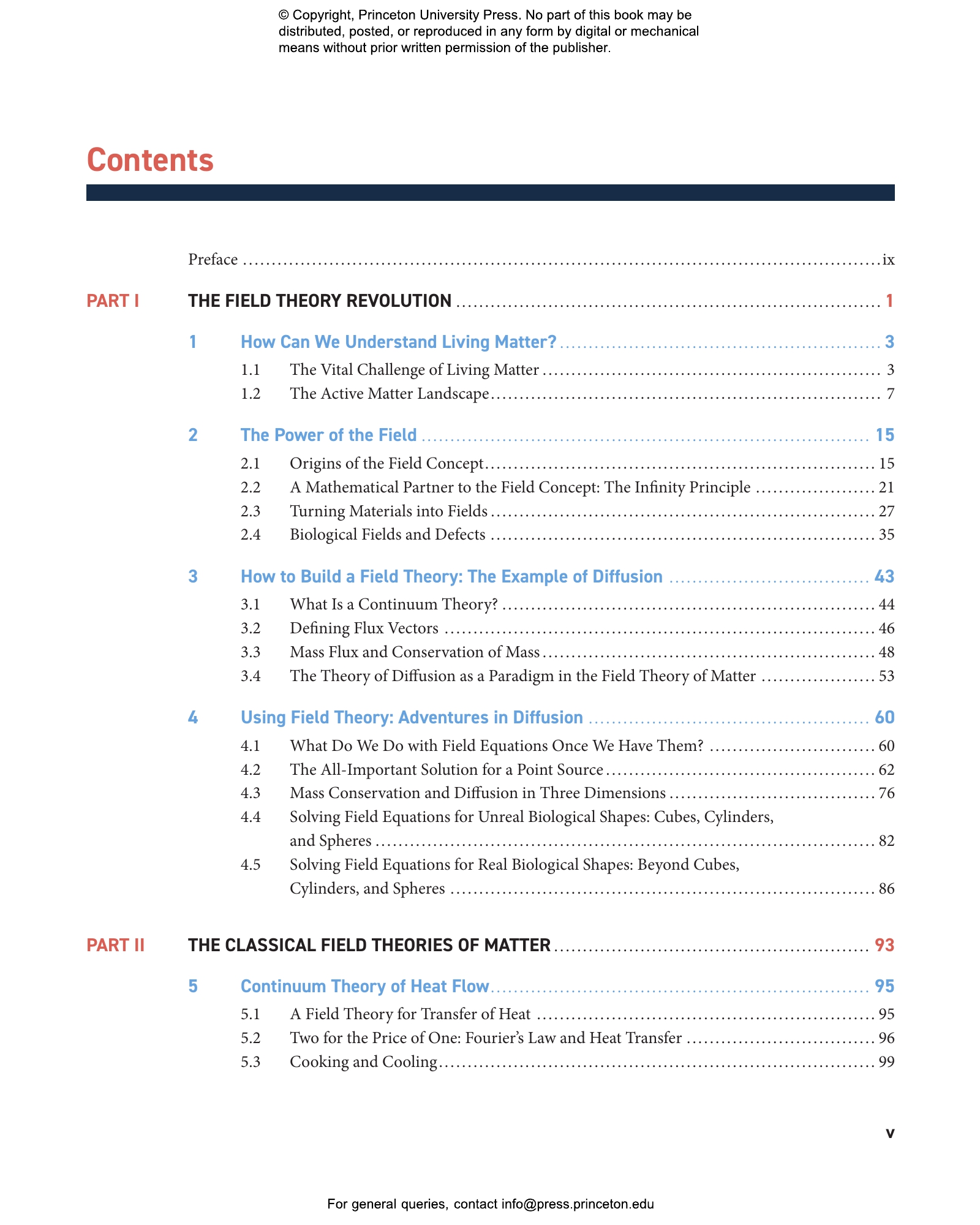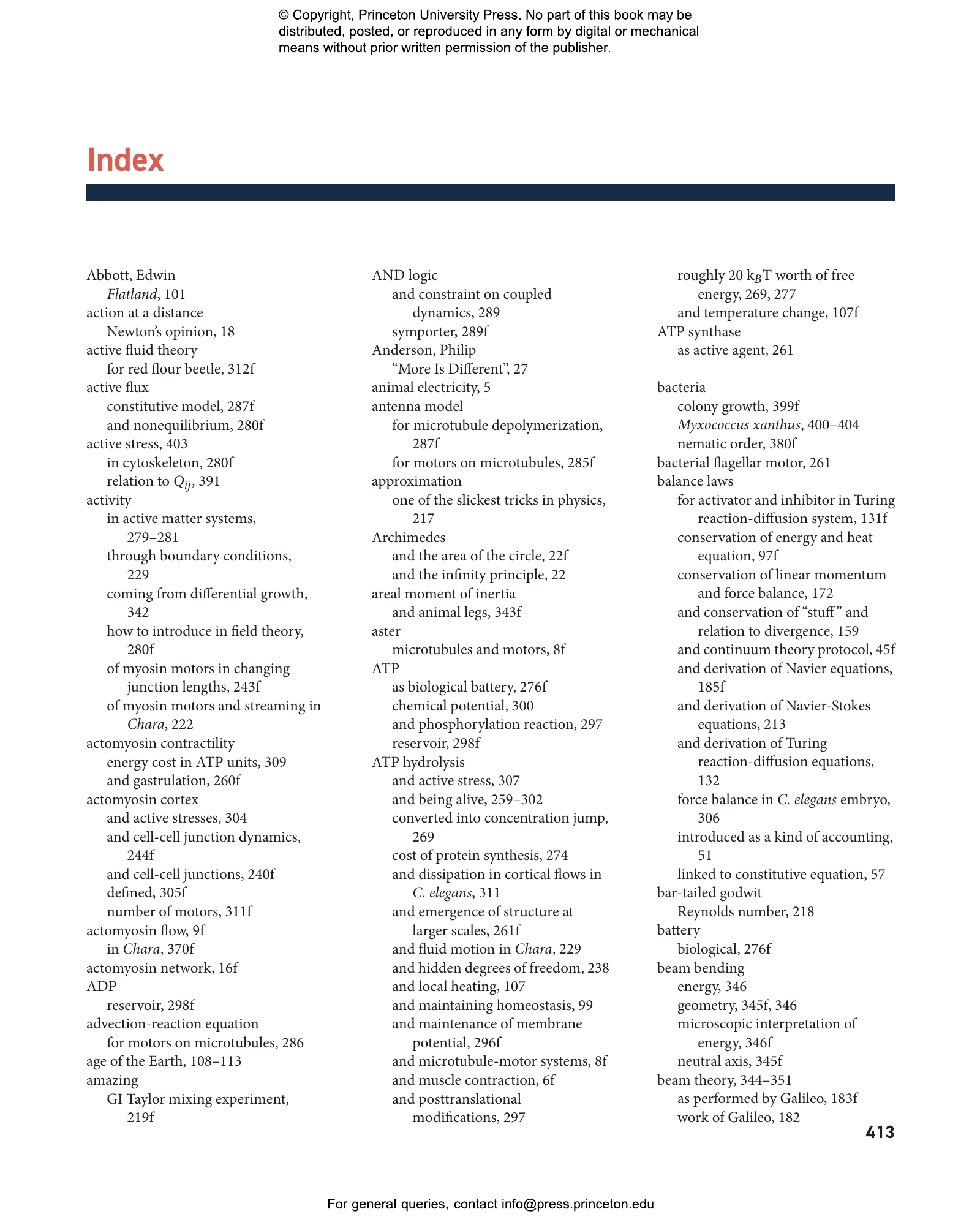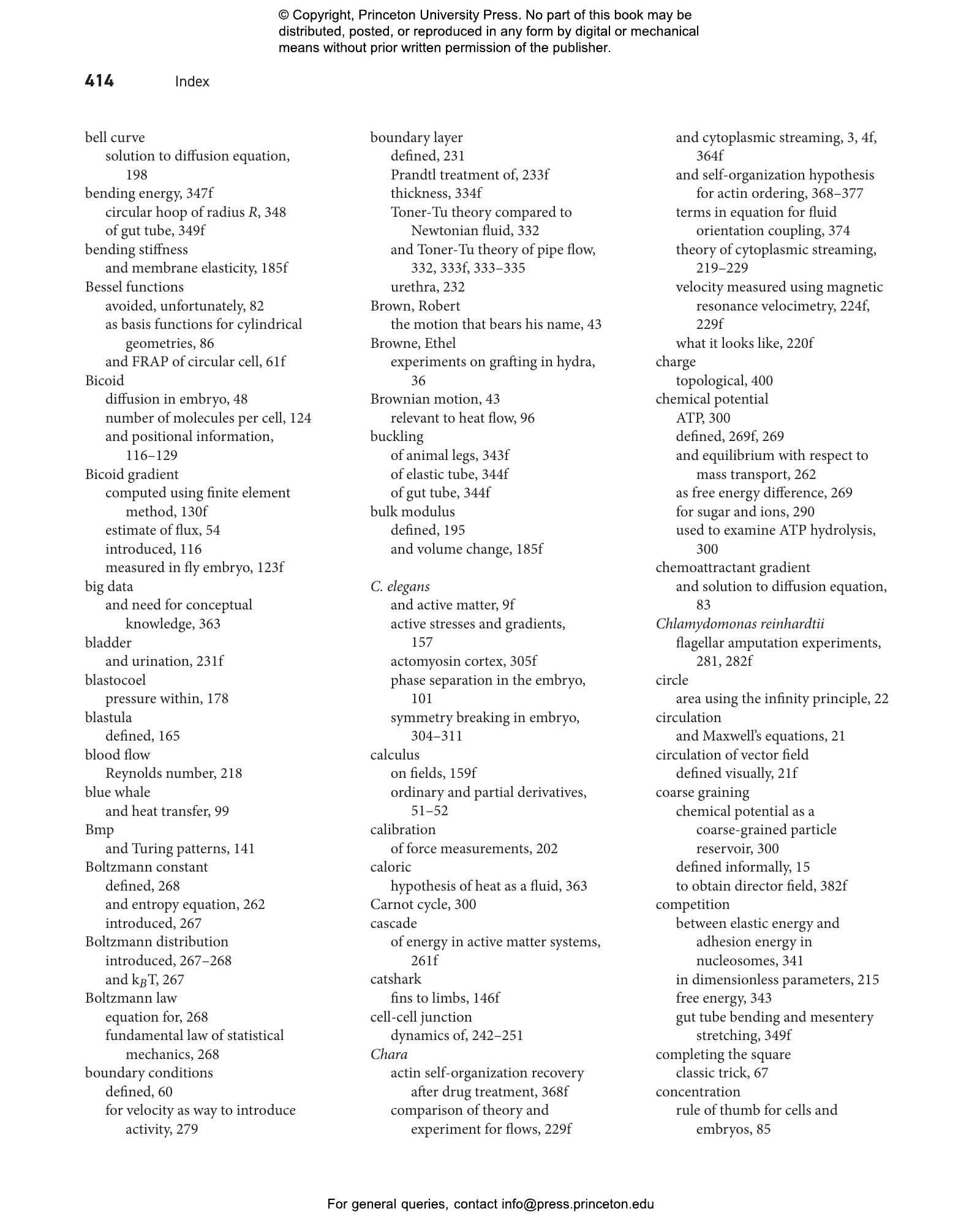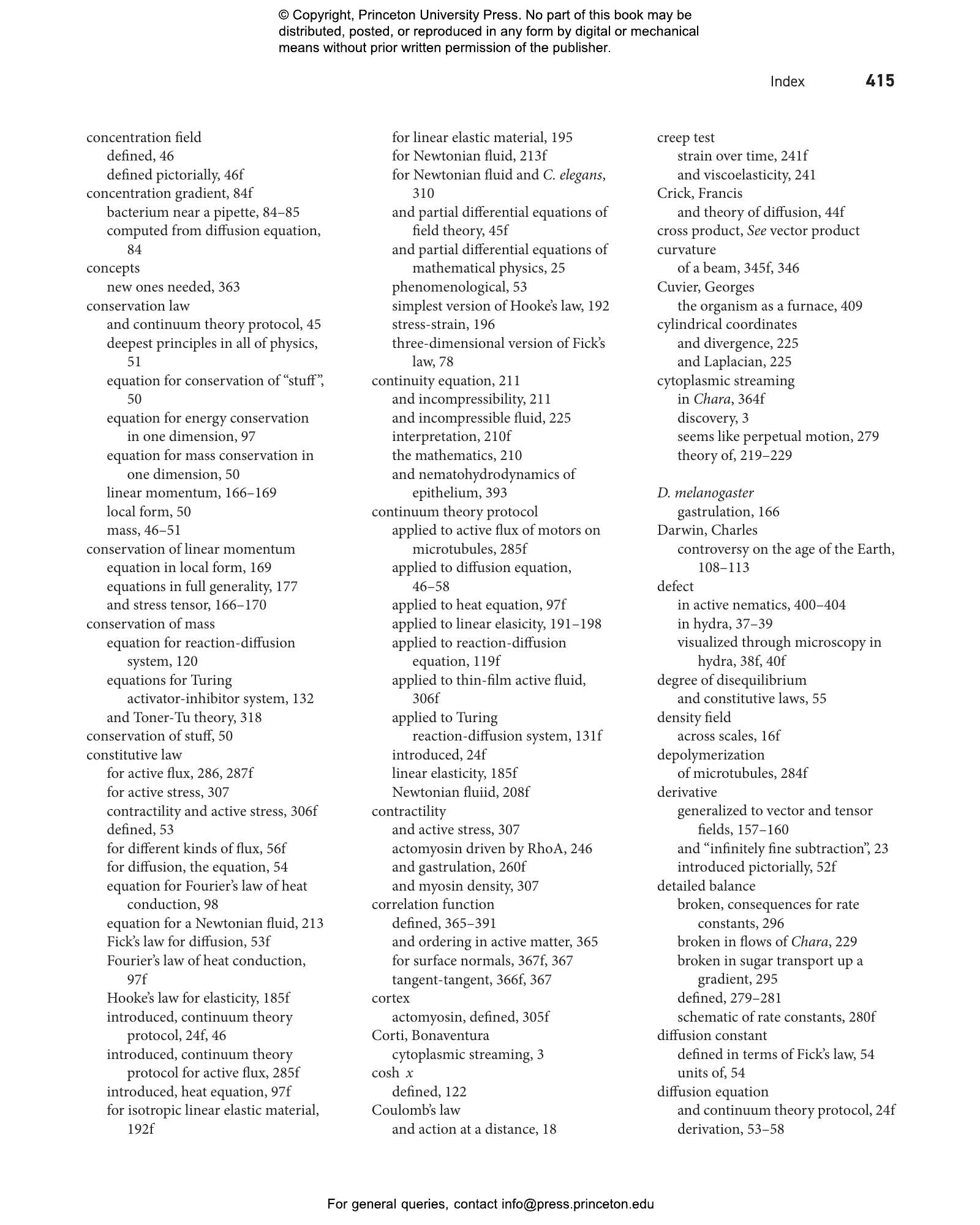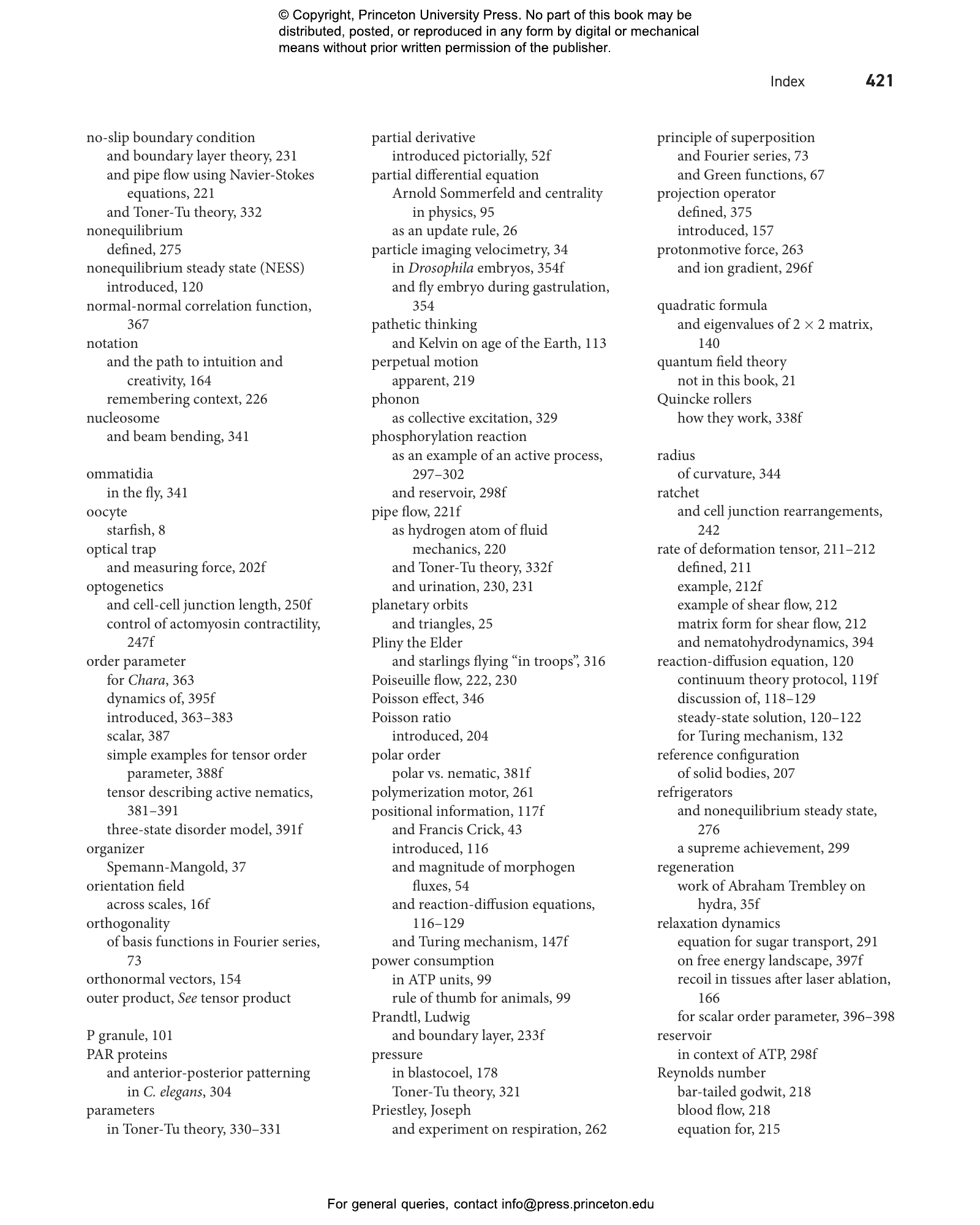In recent decades, the theory of active matter has emerged as a powerful tool for exploring the differences between living and nonliving states of matter. The Restless Cell provides a self-contained, quantitative description of how the continuum theory of matter has been generalized to account for the complex and sometimes counterintuitive behaviors of living materials.
Christina Hueschen and Rob Phillips begin by illustrating how classical field theory has been used by physicists to describe the transport of matter by diffusion, the elastic deformations of solids, and the flow of fluids. Drawing on physical insights from the study of diffusion, they introduce readers to the continuum theory protocol鈥攁 step-by-step framework for developing equations that describe matter as a continuum鈥攁nd show how these methods and concepts can be generalized to the study of living, energy-consuming matter. Hueschen and Phillips then present a range of engaging biological case studies across scales, such as the symmetry breaking that occurs in developing embryos, the perpetual flows that take place in giant algal cells, and the herding of wildebeest on the plains of the Serengeti.
An essential resource for students and researchers in biological physics and quantitative biology, The Restless Cell gives complete derivations of all calculations and features illustrations by Nigel Orme that seamlessly bridge conceptual models and continuum descriptions of living matter.
Christina Hueschen is assistant professor of cell and developmental biology at the University of California, San Diego. Rob Phillips is the Fred and Nancy Morris Professor of Biophysics, Biology, and Physics at the California Institute of Technology. His books include The Molecular Switch (Princeton) and (with Ron Milo) Cell Biology by the Numbers.
“Powerful intuition and elegant math intertwine to demonstrate why the same simple formulas underlie a huge range of biological and physical phenomena. There is something here for everyone: key historical artifacts, stunning figures, math unraveled, and a patient exposition of why field theory matters for life itself.”—Evelyn Tang, Rice University
“The Restless Cell captures the vast, unifying sweep of physical ideas as they apply not only to cells, but also to collective motions across many orders of magnitude, from subcellular to kilometer scale. Hueschen and Phillips introduce the novice to continuum mechanics, an area neglected in many science curricula, with metaphors that give visual, even tactile, meaning to each complex formula. They bring historical culture together with the latest new work in a rich tapestry, unified by the field concept.”—Philip Nelson, author of Physical Models of Living Systems
“A wonderful introduction and overview. The field of active matter has emerged in the past two decades as one that builds on established physics concepts for particle systems but extends these to living matter. The Restless Cell makes new developments accessible to noninitiated readers while giving a valuable overview of applications of active-matter approaches to problems in biology.”—Wim van Saarloos, coauthor of Soft Matter: Concepts, Phenomena, and Applications
“This scientifically provocative book provides readers with an intuitive and thorough guidebook to how the continuum approximation can provide insights into a diversity of biological phenomena. The Restless Cell leverages this powerful mathematical infrastructure to demonstrate how the same ideas that are useful for understanding how heat flows and elastic beams bend can further our understanding of the cytoskeleton, cells, and embryos.”—Madhav Mani, Northwestern University
“A very readable approach to the subject. Hueschen and Phillips provide an overview of active matter systems in terms of a progression of increasingly involved ways of applying field theory, engendering a sense of excitement in the selected examples and conveying what it means to think like a physicist.”—J. M. Yeomans, author of Statistical Mechanics of Phase Transitions
“A wonderful introduction into the science of active and energy-consuming biological matter. Complex concepts are explained in intuitive ways, turning any student or researcher interested in the real secrets of life into a restless reader.”—Stephan Grill, Max Planck Institute of Molecular Cell Biology and Genetics



